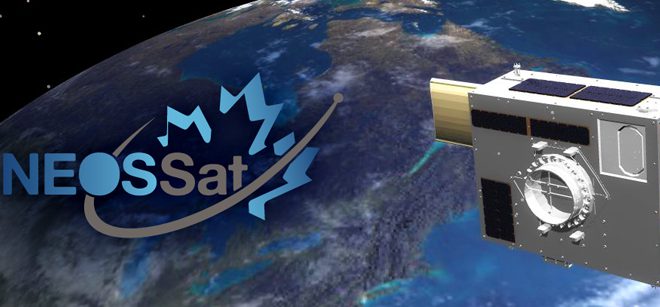With the two year anniversary of its launch coming up, the small Near-Earth Object Surveillance Satellite (NEOSSat) is still only partially achieving its mission goals. The updated mission news is a mix of good and bad.
NEOSSat, promoted as the “world’s first experimental micro-satellite designed to detect and track space objects, debris and satellites”, has two primary missions.
The Department of National Defence’s (DND) space surveillance mission monitors debris in the Medium Earth Orbit (MEO) and Geostationary Earth Orbit (GEO) regions and is referred to as the High Earth Orbit Space Surveillance (HEOSS) mission. The Canadian Space Agency’s (CSA) mission is to track asteroids and is referred to as Near Earth Space Surveillance (NESS) mission.
The project, now in its ninth year, faced long delays before it was launched almost two years ago. This included delays in the satellite launch by the launch service provider Antrix, the commercial space arm of the Indian Space Research Organisation (ISRO), and the “lack of capacity on the part of the prime contractor” according to a report published earlier this year by the CSA. For its part, the prime contractor, Microsat Systems Canada Inc. (MSCI), has stated that changes in the scope of the project resulted in many of the delays.
The CSA report, Evaluation of the Near Earth Object Surveillance Satellite (NEOSSat) Project, outlined several problems with the satellite. Surprisingly the report states the satellite was launched “somewhat” prematurely. Why it was launched prematurely is not a question the report addresses. The CSA report also states the project, which cost $25 million, was underfunded by as much as 50%.
The main problem with the satellite is that the computer programs, in particular the “fine pointing” software module which is required to take the necessary images of orbiting objects and asteroids wasn’t ready at the time of launch. The solution was to upload updated software to fix the problem once on-orbit. Unfortunately, while some progress has been made, the problem with the fine pointing still exists.
With respect to the images acquired by NEOSSat the report stated “the image quality does not at present meet the imagery requirements of the scientific aspects of the mission. NEOSSat is only taking engineering images and not scientific images. In December 2013, the science teams developed a post-processing technique that removes the pattern on short duration exposure images and imagery can be used for some mission objectives. A stable focus is needed in the imager in order to yield images of a scientific quality, due to the very low levels of light that are reflected off asteroids. Whether the intended production of 288 images per day can ever be achieved is a matter of concern.”
There is some good news though. The DND’s HEOSS “has demonstrated the capability to pursue its research and development goals that relate to monitoring orbiting space objects” according to the Canadian Space Agency when SpaceRef contacted them last week.
Additional the CSA told SpaceRef that with respect to NESS “although significant progress has been made towards NEOSSat’s ability to achieve its objectives with respect to the Near-Earth Space Surveillance (NESS) mission, its more stringent requirements with respect to this mission remain to be demonstrated. Further enhancements are planned in the coming months to reach maximum performance (image quality and sensitivity, attitude control system) and to meet the scientific objectives of the NESS mission.”
Considering the satellite has been on-orbit for nearly two years and that these problems still haven’t been resolved does not bode well for the NESS mission.
 SpaceQ Space news and analysis.
SpaceQ Space news and analysis.




